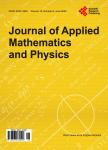SPH Particle Collisions for the Reduction of Particle Clustering, Interface Stabilisation and Wall Modelling
SPH Particle Collisions for the Reduction of Particle Clustering, Interface Stabilisation and Wall Modelling作者机构:Gas Turbine and Transmission Research Centre University of Nottingham Nottingham UK Centre for Analysis Scientific Computing and Applications Eindhoven University of Technology Eindhoven The Netherlands
出 版 物:《Journal of Applied Mathematics and Physics》 (应用数学与应用物理(英文))
年 卷 期:2018年第6卷第9期
页 面:1860-1882页
学科分类:1002[医学-临床医学] 100214[医学-肿瘤学] 10[医学]
主 题:SPH Particle Clustering Multiphase Flow Interface Stabilisation Wall Modelling
摘 要:The pair-wise forces in the SPH momentum equation guarantee the conservation of momentum, but they cannot prevent particle clustering and wall penetration. Particle clustering may occur for several reasons. A fundamental issue is the tensile instability, which is caused by negative numerical pressures. Clustering may also occur due to certain properties of the kernel gradient. Discontinuities in the pressure and its gradient, due to surface tension and gravity, may cause particle instabilities near the interface between two fluids. Wall penetration is also a form of particle clustering. In this paper the particle collision concept is introduced to suppress particle clustering. Here, the use of kinematic conditions (motion) rather than dynamic conditions (forces) is explored. These kinematic conditions are obtained from kinetic collision theory. Conservation of momentum is maintained, and under elastic conditions conservation of energy as well. The particle collision model only becomes active when needed. It may be seen as a particle shifting method, in the sense that the velocities are changed, and as a consequence of that the particle positions change. It is demonstrated in several case studies that the particle collision model allows for realistic (low) viscosities. It was also found to stabilise the interface between two fluids up to high, realistic density ratios (1000:1) in typical liquid-gas applications. As such it can be used as a multi-fluid model. The concept allows for real wave speed ratios (and far beyond), which, as well as real viscosities, are essential in the modelling of heat transfer applications. The collisions with walls allow for no-slip conditions at real viscosities while wall penetration is suppressed. In summary, the particle collision model makes SPH more robust for engineering.



